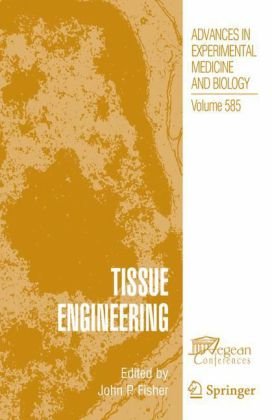

Most ebook files are in PDF format, so you can easily read them using various software such as Foxit Reader or directly on the Google Chrome browser.
Some ebook files are released by publishers in other formats such as .awz, .mobi, .epub, .fb2, etc. You may need to install specific software to read these formats on mobile/PC, such as Calibre.
Please read the tutorial at this link: https://ebookbell.com/faq
We offer FREE conversion to the popular formats you request; however, this may take some time. Therefore, right after payment, please email us, and we will try to provide the service as quickly as possible.
For some exceptional file formats or broken links (if any), please refrain from opening any disputes. Instead, email us first, and we will try to assist within a maximum of 6 hours.
EbookBell Team

4.7
36 reviewsThis special issue of Advances in Experimental Medicine and Biology includes much of the research presented at the recent Second International Tissue Engineering Conference. Held in Crete, Greece, as part of the Aegean Conference Series, the Second International Tissue Engineering Conference was organized by Dr. Kiki Hellman of the Hellman Group, Dr. John Jansen of the Nijmegen University Medical Center, and Dr. Antonios Mikos of Rice University. The conference brought over 150 researchers from around the world to the Knossos Royal Village Conference Center in Crete from May 22 to 27, 2005. Following along the lines of the conference program, this volume is divided into seven sections, focusing on stem cells, signals, scaffolds, applied technologies, animal models, regulatory issues, as well as specific tissue engineering strategies. Both original research papers and review papers are presented. The chapters reflect a diverse group of authors, including both clinicians and academicians. Furthermore, the issue contains - pers from Asia, Australia, Europe, and North America, demonstrating the international component of the conference. The intended audience for this issue includes researchers, advanced students, and - dustrial investigators. This issue should be a useful reference for tissue engineering courses as well as for researchers developing engineered tissues for clinical applications.